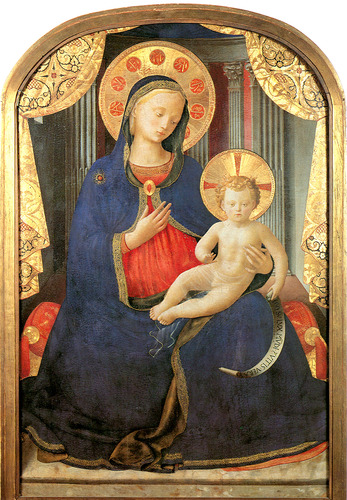
The Life of the Blessed Virgin Mary by Blessed Anne Catherine Emmerich
XVIII. THE DEATH OF THE BLESSED VIRGIN MARY AT EPHESUS1. REGARDING MARY'S AGE.
The following communications, made in different years, generally in the middle of August before the Feast of the Assumption, are here arranged in chronological order. 1. REGARDING MARY'S AGE. [On the morning of August 13 ^th, 1822, Catherine Emmerich said: Last night I had a great vision of the death of the Blessed Virgin, but have completely forgotten it all.' On being asked, in the middle of a conversation on everyday matters, how old the Blessed Virgin was when she died, Catherine Emmerich suddenly looked away and said: She reached the age of sixty-four years all but three and twenty days: I have just seen the figure X six times, then I, then V; is not that sixty-four?' (It is remarkable that Catherine Emmerich was not shown numbers with our ordinary Arabic figures, with which she was familiar, but never saw anything but Roman figures in her visions).] After Christ's Ascension Mary lived for three years on Mount Sion, for three years in Bethany, and for nine years in Ephesus, whither St. John took her soon after the Jews had set Lazarus and his sisters adrift upon the sea. [182] Mary did not live in Ephesus itself, but in the country near it where several women who were her close friends had settled. [183] Mary's dwelling was on a hill to the left of the road from Jerusalem some three and a half hours from Ephesus. [184] This hill slopes steeply towards Ephesus; the city as one approaches it from the south-east seems to lie on rising ground immediately before one, but seems to change its place as one draws nearer. Great avenues lead up to the city, and the ground under the trees is covered with yellow fruit. Narrow paths lead southwards to a hill near the top of which is an uneven plateau, some half-hour's journey in circumference, overgrown, like the hill itself, with wild trees and bushes. It was on this plateau that the Jewish settlers had made their home. It is a very lonely place, but has many fertile and pleasant slopes as well as rock-caves, clean and dry and surrounded by patches of sand. It is wild but not desolate, and scattered about it are a number of trees, pyramid-shaped, with big shady branches below and smooth trunks.John had had a house built for the Blessed Virgin before he brought her here. Several Christian families and holy women had already settled here, some in caves in the earth or in the rocks, fitted out with light woodwork to make dwellings, and some in fragile huts or tents. They had come here to escape violent persecution. Their dwellings were like hermits' cells, for they used as their refuges what nature offered them. As a rule, they lived at a quarter of an hour's distance from each other. The whole settlement was like a scattered village. Mary's house was the only one built of stone. A little way behind it was the summit of the rocky hill from which one could see over the trees and hills to Ephesus and the sea with its many islands. The place is nearer the sea than Ephesus, which must be several hours' journey distant from the coast. The district is lonely and unfrequented. Near here is a castle inhabited by a king who seems to have been deposed. John visited him often and ended by converting him. This place later became a bishop's see. Between the Blessed Virgin's dwelling and Ephesus runs a little stream which winds about in a very singular way.
CONTENTS | NEXT | FOOTNOTESCopyright ©1999-2023 Wildfire Fellowship, Inc all rights reserved

 Keep Site Running
Keep Site Running